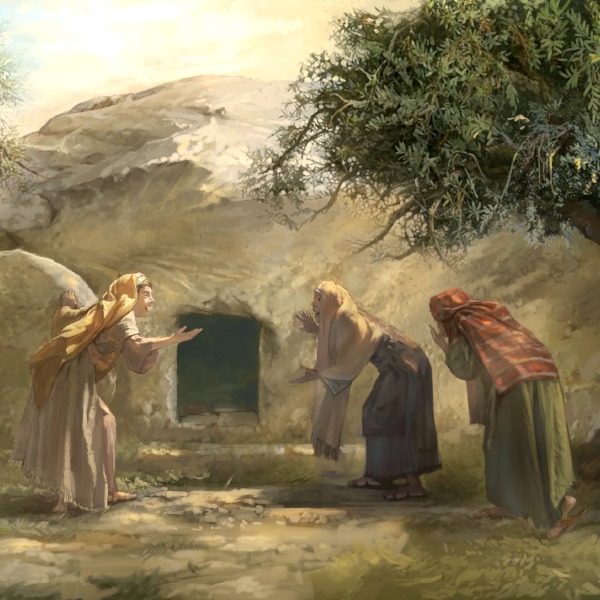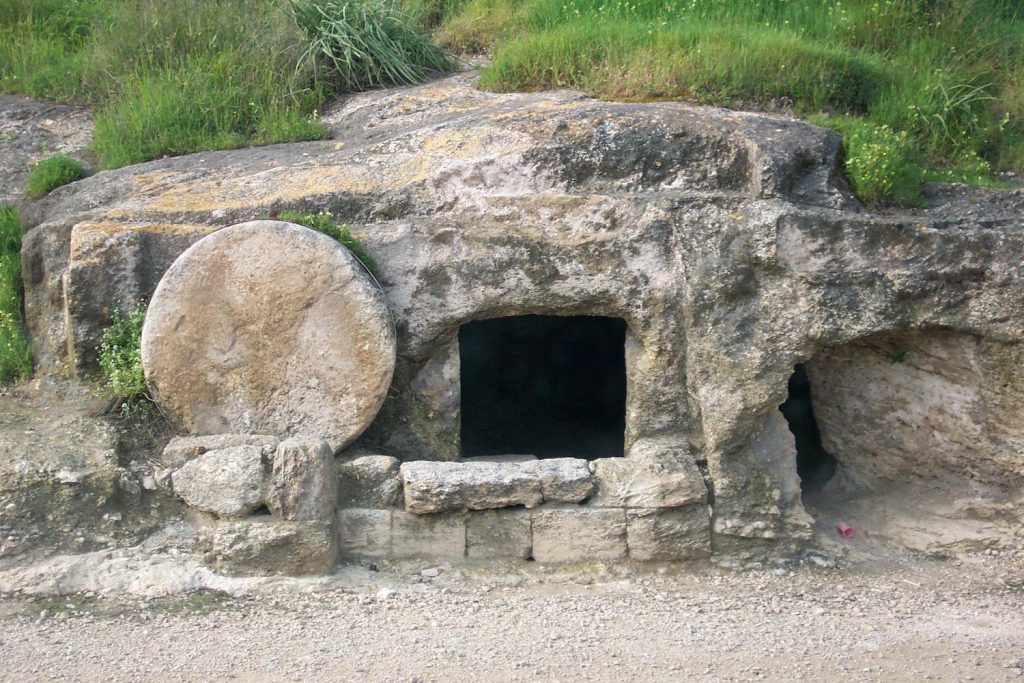THE SOURCES

The story of Easter is well-known: the empty tomb, Jesus appearing to Mary Magdalene in the garden, and later to his disciples. There are five sources for the story, the four gospels and Paul’ s letter to Christians in Corinth. The problem is that they don’t hang together very well. The two earliest and most reliable accounts are by Mark and Paul. John has a most moving account. Luke gives a summary picture. Matthew makes stuff up. Here is what they say:
Mark: Mary Magdalene and two other women go early to the tomb, find it empty and a young man in white inside who tells them that Jesus is risen. They run away.
1 Corinthians 15: Jesus was raised on the third day and appeared to Peter.
Luke: Mary Magdalen and several woman find the tomb empty. Two men in shining clothes tell them that Jesus is living. They tell this to the eleven and are not believed.
Later Jesus appears to Peter, to Cleophas and his companion (and Peter) and then to the rest.
John: Mary Magdalen is on her own and finds the tomb empty. She tells Peter and the other disciple, who both run to the tomb. Mary Magdalen encounters Jesus outside the tomb.
Matthew: The writer adds a detachment of soldiers, an earthquake, and a dazzling angel who rolls the stone away, sits on it and tells Mary Magdalen and the other Mary to tell the disciples. As they go Jesus meets them and they clutch his feet. The chief priests tell the guards to say that they fell asleep and the disciples stole the body during the night.
THE PROBLEM

Who should we believe? Certainly not Matthew. We know from the rest of his gospel the he editorialises. For example, the one blind man Bar-Timaeus in Mark, in Matthew becomes two blind men. He gives us a souped-up, Hollywood version of the Easter story, the sort of treatment that Mel Gibson might give it.
Paul adds no details to help us reconstruct what happened.
Luke gives substantially the same account as Mark except that one young man/angel has become two. He has used Mark faithfully.
The problem lies in the juncture of Mark and John. Mark says that there were several women, including Mary Magdalen. John puts Mary Magdalen on her own in the garden. How can we reconcile this?
When preaching in church, one can simply concentrate on one account at a time. But in ‘Jesus the Troublemaker’ I was writing a novel and an author cannot permit himself the luxury of two inconsistent accounts. How to square the circle? I did this to my own satisfaction by asking two simple questions, ‘Who was John?’ and ’Where was Peter?’
WHO WAS JOHN?
All down the centuries Christians have assumed that John, the author of the gospel, was John son of Zebedee, a Galilean fisherman, who died at a great age in Ephesus, in modern Turkey. It is therefore a major puzzle why almost all the action of the gospel takes place in Jerusalem. Apart from chapters 6 and 21, only 22 verses are set in Galilee. Early church tradition said there are two Johns buried in Ephesus. The Cambridge academic Richard Baukham argued persuasively (for me) that the author of the gospel was in fact a Jerusalem disciple. This is why all the geographical descriptions are accurate. It also explains why the disciple who followed Jesus after his arrest was ‘known to the high priest’ and so could go inside himself and take Peter with him (John 18.16).
WHERE WAS PETER?
The last we hear of Peter on the last day of Jesus’ life is of him denying any knowledge of Jesus breaking down in tears in the courtyard of the high priest. This is either the former high priest Annas (in John) or an unnamed high priest, presumably Caiaphas (in Mark), or Annas or Caiaphas (in Luke). In my novel I have John taking the despairing Simon Peter under his wing and taking him to his house in Jerusalem where he could hide and weep. Later this same John went to the crucifixion site and on Jesus’ instruction took Jesus’ mother Mary under his protection and “took her into his own home”.
So it was in John’s house that Simon Peter and Mary spent the next 36 hours and “rested according to the commandment”.
RECONSTRUCTING THE FIRST EASTER

1 Mary Magdalene, and Mary the mother of James, and Salome set off very early bringing the spices they had bought the evening before (i.e. after the sabbath which ended at sunset). Luke adds Joanna and omits Salome but says other women were with them. Note that none of them mention Mary the mother of Jesus.
2 When they get to the tomb, the stone has been rolled away and a young man in a white tunic tells them “He has been raised. He is not here”. (Mark and Luke). Only Mark adds the significant instruction: “Go, tell his disciples and Peter that he is going ahead of you to Galilee…”. Why the separate instruction for Peter? Surely because Peter was actually in a different location. In my novel, Mary of Magdala guesses where he is, in the John’s home, finds him and tells him about the empty tomb.
3 This is why it is only Peter and the disciple who Jesus loved (John of Jerusalem) who run to the tomb. The other disciples had not yet been told. (John 20.1-10)
4 Thus Mary of Mandala is left on her own at the tomb and has her encounter with the risen Jesus (John 20.11-18)
5 When the women report to the remaining ten men disciples, but “it seemed to them an idle tale.” However, Peter did run to the tomb. (But why only Peter if he was actually at Bethany with the others? John gives convincing details).
6 Jesus appears to Peter on that first day, as Paul reports in 1 Corinthians 15, and as the disciples also report later in Easter evening (Luke 24.34).
SO WHAT?
Christianity is a historical faith. Its claims for allegiance are based on the actual historical events of the crucifixion and resurrection. There are so many conspiracy theories washing around ‘The Holy Blood and the Holy Grail’, ‘The Da Vinci Code’ etc). that Christians need to have valid arguments to support the truth of the story of Jesus. Because if his death and resurrection were historical events, then our views of life and of death are turned upside down and we can embrace the hope of a life in God that cannot, like Jesus himself, be destroyed by death. That is a hope worth having!

